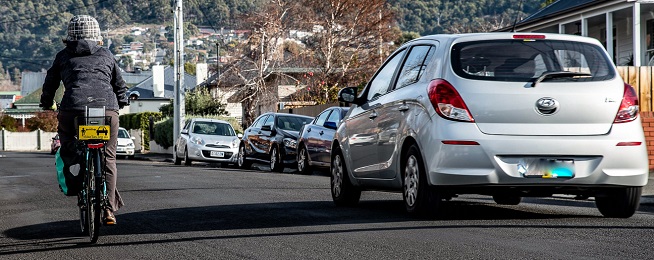Tasmania’s upper house has opened an inquiry into road safety and is calling for submissions on how we can cut the unacceptably high number of deaths and injuries on our roads.
Tasmania’s road toll has reached a plateau in the past few years with deaths and serious injuries seemingly stuck at just over 300 people. Per capita, we have the highest road toll of any Australian state, with only the Northern Territory higher.
Our Road Safety Action Plan is generally pointed in the right direction but we need more funding, innovation and culture change if we are going to save lives.
Importantly, we need to transform our current transport planning approach from one focused on speed and convenience to one focused on safety of all road users.
You can make your own submission by 27 August by emailling it to rst@parliament.tas.gov.au and if you want more information on submissions visit the inquiry’s webpage.
Bicycle Network is making a submission to the inquiry on actions that could be taken to better protect people riding bicycles in Tasmania and acknowledgement of them in the government’s strategies and performance benchmarks.
Vulnerable road users
People riding bicycles are classified as vulnerable road users because they are so exposed to death and injury if hit by someone driving a vehicle.
In the past ten years more than 100 people have lost their lives or suffered a serious injury while riding a bicycle in Tasmania. A serious injury involves 24 hours or more of hospitalisation.
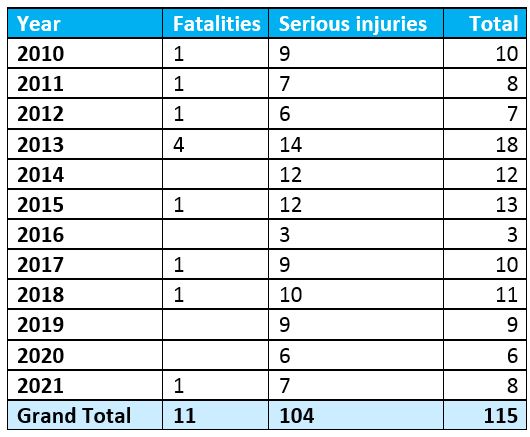
The majority of serious crashes involving people riding involve motor vehicles and while not all crashes are the fault of drivers, when a crash happens it’s the person on the bicycle who suffers the most.
To better address the causes of crashes for different users, we recommend that a unique set of targets for motor vehicle drivers and vulnerable road users be adopted.
Reducing fatal five can help riders
Some of the main reasons for vehicle-on-vehicle crashes also apply for crashes with people on bicycles. We need to reduce distracted driving, speeding, drug and alcohol use and fatigue if we are going to make it safer for people riding on roads as well as all other road users.
Many of us are aware of people behind the wheel fiddling with their dashboards or checking their phones while driving. When drivers are distracted they are effectively ‘travelling blind’, which causes significantly large areas of the road space to become hazardous for other road users.
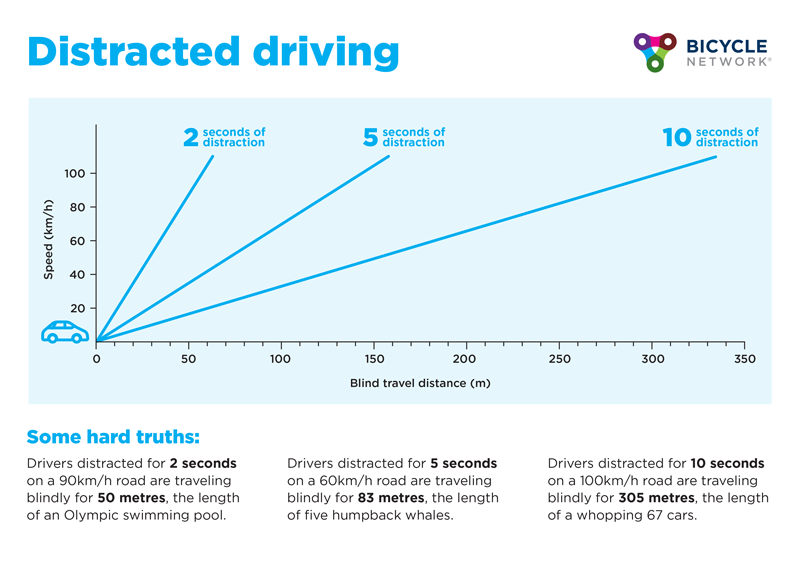
To counter mobile phone use, cameras have been developed that capture drivers using their mobile phones as well as speeding and issue fines. These are already being used in New South Wales and could be implemented in Tasmania to reduce the number of drivers doing the wrong thing.
There is also a need for road safety campaigns and improved driver testing to reinforce the need for drivers to pay attention at all times to the road and all its users.
Speeding is a great risk for people on bicycles. A person hit by a vehicle travelling at 30 km/h has a 90% chance of survival, at 40 km/h it’s 60% and at 50 km/h it’s 10%.
Bicycle Network has long supported reducing speed limits to 30 km/h in situations where there are likely to be vulnerable road users such as urban centres, school zones and school buses.
Making trucks safer
Nearly one-quarter of crashes where bike riders die in Australia involve heavy vehicles, and this statistic has not changed for the past 20 years.
Drivers of freight vehicles have numerous blind spots and people walking and riding are often not aware of where these blind spots are. The consistency of these crashes over the long term highlights that we have not solved the problem.
We’d like to see more safety devices on heavy vehicles that reduce these blind spots, better protect riders if they are hit and alert drivers to people in their blind spots. Education campaigns for people riding and walking are also needed so they don’t put themselves in the blind spot danger zones.
Shoulder sealing
Widening and sealing shoulders on major roads would help drivers to retain control of their vehicles when they veer out of their lanes, as well as providing a space in the road reservation for people riding away from vehicles.
Too many of Tasmania’s major roads have unsealed or very narrow sealed shoulders with high posted speed limits and are missing the rumble strip or audible edge marking that alert drivers who veer out of their lane.
Enforcing passing distance
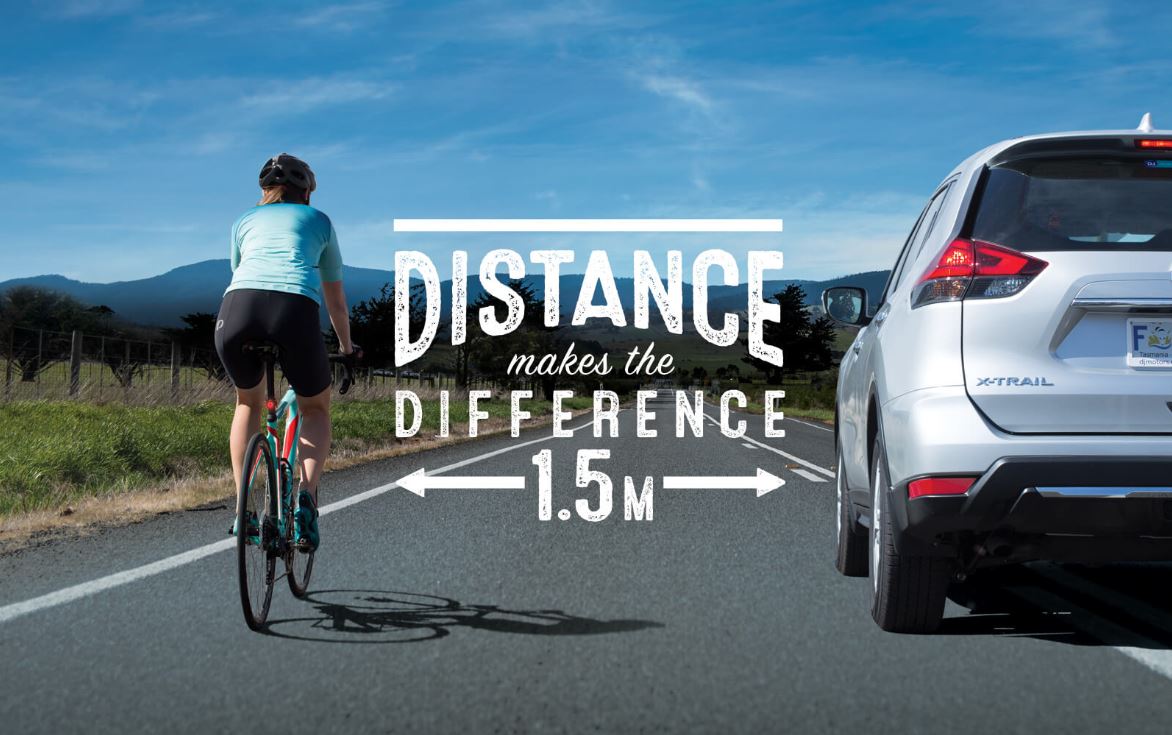
Anecdotally, riders tell us that the majority of drivers are obeying the minimum passing distance law. However, there is a small number of drivers who consistently pass much too close to riders and risk a crash occurring.
The onus is on bike riders to equip themselves with the technology to be able capture a driver passing too close and then to rely on police prosecutors to decide whether the case could stand up in court before a driver is charged.
In the United Kingdom, where these laws have been in place for longer, police forces actively enforce minimum passing distance laws through Operation Close Pass activities. They do this through footage taken from police cars or motorbikes, or send police officers out on bicycles with the technology and backup to catch drivers who are breaking the law.
There is scope in Tasmania to enact enforcement campaigns to ensure drivers are giving enough distance, similar to campaigns around speeding, distraction and drug and alcohol usage. Education campaigns should continue to be rolled out to keep reminding drivers of the importance of these laws.
Separated cycling infrastructure
One of the most effective interventions to protect people riding is to separate them as much as possible from larger vehicles.
A wealth of evidence shows that cities with high bike riding volumes have better road safety outcomes and that this is associated with the installation of separated infrastructure
Separated infrastructure should be at the forefront of current and future road projects and as stand-alone road safety projects in their own right.
While there is Austroads advice to separate people on bicycles from vehicles once traffic volumes and speed reach a certain point, very few places in Tasmania do so.
This infrastructure matrix was recently updated for Austroads by the Melbourne-based Institute for Sensible Transport, making it clearer that protected or separated cycleways are key for most road environments.
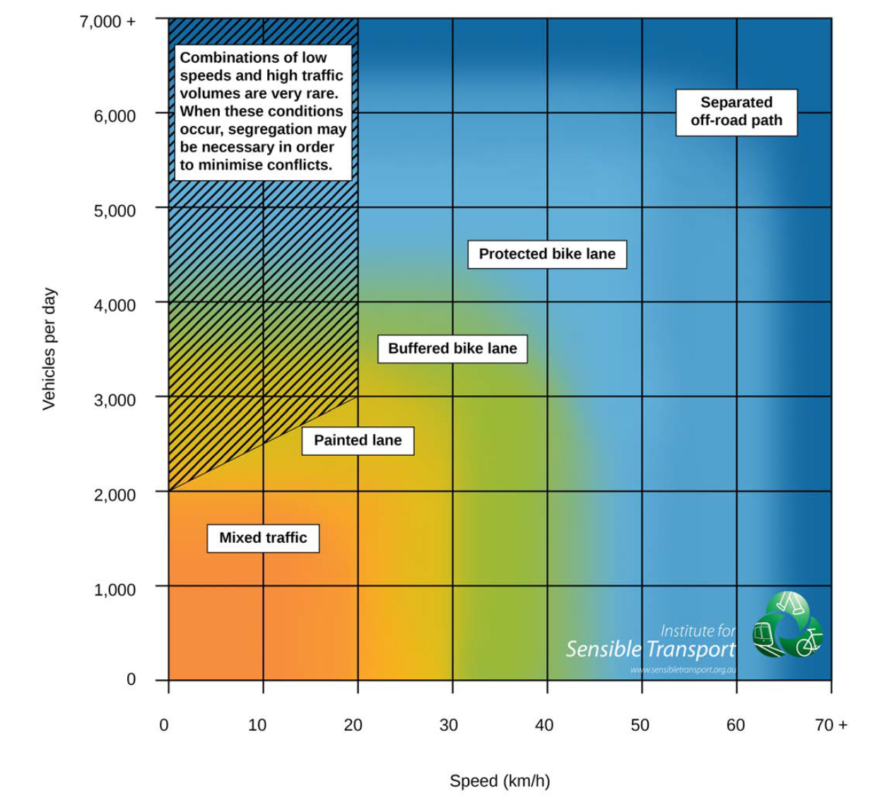
This is advice only, leaving councils and state government to adopt different approaches across the state. It would benefit everyone if the Tasmanian Government issued Tasmanian guidelines on the types of cycling infrastructure that should be built in different road environments, and practical advice on how to build that infrastructure.
The Tasmanian government does not have a dedicated funding stream for such infrastructure, with project funding and one-off cycling infrastructure funds announced during election campaigns and varying in size each time. There needs to be an ongoing fund to retrofit separated cycling infrastructure to state and council-owned roads


